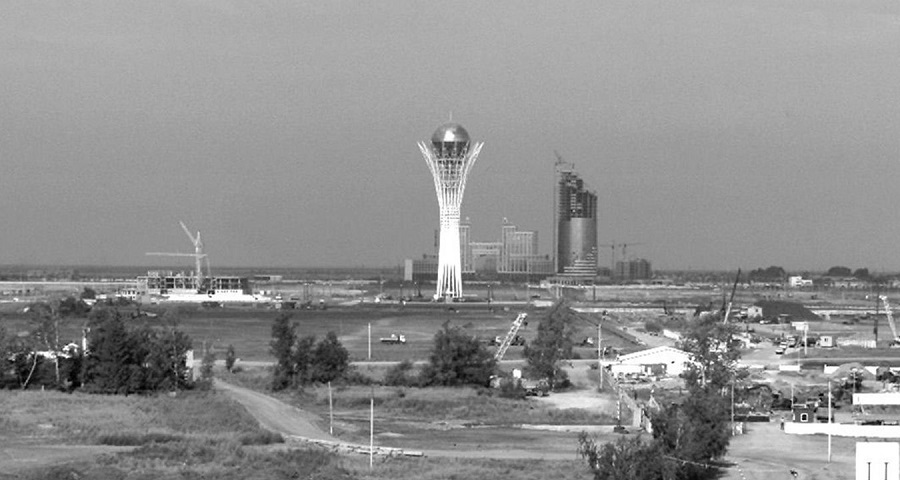Every year on July 6 Kazakhstan celebrates Capital City Day, commemorating the launch of the 27-year old former Soviet Republic’s current national capital.
This year’s festivities in celebration of Astana, Kazakhstan’s capital, is expected to be extra special, as the city turns 20. Millions of people are expected to join in celebrations that will include spectacular fireworks displays, parades and concerts.
To mark the occasion 650 events have been in the works for months, including “The Spirit of Astana” International Music Festival, World Theater Festival, as well as Central Asia’s largest film extravaganza – the 14th Eurasia International Film Festival.
Considered a futuristic city with a population of nearly one million, Astana used to be a small suburban city with only 284,000 residents in 1998 – the year when it became the capital of what is now Caspian region’s some of the wealthiest economies.

Meanwhile, the idea of moving the capital of Kazakhstan from southeastern Almaty to northern Astana came long before 1998, while the final decision was made by the Supreme Council of Kazakhstan in 1994. Nursultan Nazarbayev, who has been leading the country since 1989, recalling those years, says moving the capital from Almaty to Astana was never a doubt in his mind.
“If I had doubts, my allies would begin to doubt too, then nothing would have happened,” he told in an interview with Russia 24 news channel. “At first they even thought that I was kidding them.”
On a frosty December day in 1997, national parliamentarians arrived in Astana to set up the government. Located on the northern steppe plains of Central Asia, the city is known for its sharp continental climate. Winter temperatures can drop below -50 °C (-58 °F) while occasionally exceeding 40 °C (104 °F) in the summer. It was very difficult to adapt to such climatic conditions for the residents of Almaty, which is situated in the far southeast and close to the border with Kyrgyzstan.
Though the weather was harsh in Astana, the government launched a mega-construction project – Astana, as we know it, was built from scratch. More than 40 architects from the U.S., China, Russia, Germany and Japan were invited to participate in bids for public contracts to build the city.
Over the past 20 years, Astana has changed beyond recognition, as new, ultra-modern buildings dot the left bank of the Ishim River, which divides the city into two parts.
With a length of roughly 2,000 meters, a boulevard known as Nurzhol, which means “a bright path” in Kazakh, is considered one of the main attractions. Designed by the famous Japanese architect Kisho Kurokawa, the boulevard passes from president’s official residence, known as Ak-Orda, to the shopping and entertainment center called Khan-Shatyr – recognized as the biggest tent in the world. Along the boulevard, there are eye-catching architectural designs, including the symbol of the city, Bayterek Tower.

Rising to a height of 105 meters, Bayterek is considered a symbol of the city. Constructed as an artistic rendition of a tree trunk with a golden sphere perched upon the top, the tower symbolizes the legend of ancient nomads – ancestors of modern Kazakhstanis – that believed there is a Great River that flows at the junction of two worlds.
Even after 20 years some are still wondering what could have been the reason for the relocation of the capital to Astana. Nazarbayev credits the move to posterity, saying, “It was necessary to submit a new idea, a huge task for the upcoming generations.”
“The capital of the state should be in the center of the country,” he added.
“In addition, it should be a place that can give an impetus to the economic development, a new impulse that will gather new forces needed for the development of Kazakhstan. A new intelligentsia, new elite will grow there – and this is also very important.”







 Armenian sappers commenced on Monday mine-clearance operations in the territories adjacent to the Saint Mary Church in village of Voskepar (Armenia...
Armenian sappers commenced on Monday mine-clearance operations in the territories adjacent to the Saint Mary Church in village of Voskepar (Armenia...
 Iran and Pakistan have signed eight cooperation documents in various fields, and agreed to strengthen ties to fight terrorism in the region.
Iran and Pakistan have signed eight cooperation documents in various fields, and agreed to strengthen ties to fight terrorism in the region.
 President Aliyev emphasized the critical role of the North-South Transport Corridor in fostering transport cooperation between Azerbaijan and Russi...
President Aliyev emphasized the critical role of the North-South Transport Corridor in fostering transport cooperation between Azerbaijan and Russi...



